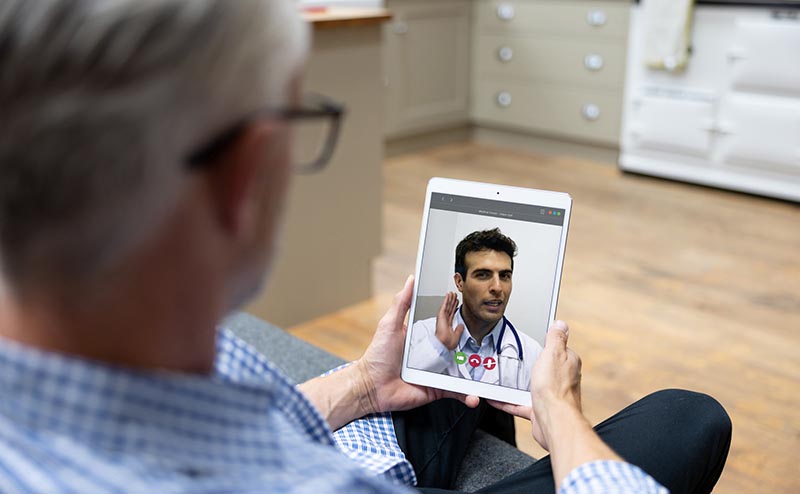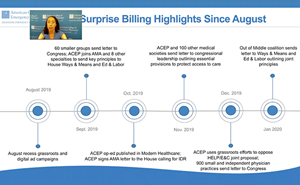It’s been a few months, but here is the fourth blog in a special blog series that ACEP is doing with the Geriatric Emergency Department Collaborative (GEDC), as well as West Health and The John A Hartford Foundation! These blog posts delve into the concept of value-based care in emergency medicine.
As a reminder, the first blog post in the series, posted in May 2022, provided an overview of value-based care and highlighted some of the initial work being done within emergency medicine to improve the quality of care delivered and lower costs. We particularly focused on the advent of geriatric emergency departments (GEDs), which incorporate specially trained staff and assess older patients in a more comprehensive way.
Next, in July 2022, we published a second blog post that dove deeper and discussed some of the challenges emergency medicine faces moving towards participating in value-based care payment models and what we collectively need to do to advance this movement. In the end, we made the post a call to action both for you as emergency physicians and for policymakers. It’s time to truly realize the potential of emergency physicians to influence health care quality and cost and engage them in value-based care initiatives and to change the perception of an emergency department (ED) visit as a failure in the system to an opportunity for changing patients’ care and cost trajectories.
Then, on December 1, 2022, we released the third blog post that provided a “how to” to help those of you who are ready to engage with payors and try to integrate value-based care models into your existing contracts.
In this blog post, we want to turn our attention to some of the innovative practice models within emergency medicine that enable you as emergency physicians to utilize your unique skill set outside the four walls of the ED. Under ACEP’s new strategic plan, a major pillar is “practice innovation,” where we are tracking emerging trends in clinical and business practices and developing new career opportunities for emergency physicians (i.e., additional options/alternatives to working in an ED setting). Using a systematic approach, our goal is to identify two or three viable career options for emergency physicians that expand the practice of acute, unscheduled care. We will then support the implementation of prioritized new high-value practice models and develop an institutional framework that will support the creation of innovative models going forward. ACEP has established a task force to start this work, and I will provide more updates on this important initiative in the future!
One innovative model that has been explored is telehealth—and while I have often written about Medicare telehealth policies, codes, and reimbursement structures, I haven’t delved deeply into how telehealth is actually being utilized in emergency medicine. Telehealth has in fact been an extremely important tool for treating the geriatric population.
ACEP fundamentally believes that you as emergency physicians are well positioned to provide excellent telehealth services. You all are true experts at triaging, diagnosing, and intervening on just about all medical conditions, and then connecting our patients with the follow-up care they need. These are skills well suited to telehealth care delivery, and as the practice of medicine changes, incorporating telehealth into your practice will be increasingly necessary.
The last few years have seen a number of emergency telehealth practices increasingly utilized. Many of you have started to use telehealth to see your patients in their homes, your triage areas, and even your own EDs. Though of course some of these practices were unique to the initial stresses of the COVID-19 pandemic, some are skills you all should continue to develop for a multitude of reasons: 1) patients often benefit from receiving care in their home; 2) technology is improving; 3) this is not the last infectious disease crisis we are likely to face; and 4) with the Consolidated Appropriations Act, 2023 extending telehealth flexibilities for the next two years through 2024, it is likely that some sort of expanded coverage of emergency telehealth services is here to stay.
During roughly the same time as the pandemic, the Emergency Triage, Treat, and Transport (ET3) model has evolved to enable emergency medical services (EMS) to treat patients on scene with telehealth assistance. The ET3 model, implemented and funded by the Centers for Medicare & Medicaid Services’ (CMS)’ Innovation Center (CMMI), is a five-year initiative that began on January 1, 2021. Traditionally, Medicare only pays for unscheduled ambulance services to take patients to hospital EDs. The ET3 model provides for two alternative ambulance payments: (1) payment for treating the patient in place with a qualified health care practitioner (NPs, PAs, or physicians), either on the scene or connected using telehealth; and 2) payment for unscheduled transportation to alternative destinations such as primary care providers or urgent care clinics. Thus, under the “treatment in place” concept, a paramedic could be present in-person along with a patient, communicating with an emergency physician virtually who provides the actual service. There are currently 160 participants in the model, and CMMI should have initial results soon.
In addition to EMS services, emergency telehealth for skilled nursing facility (SNF) residents has also increased dramatically, demonstrating an ability to treat many residents at their place of residence avoiding sometimes traumatic and costly transitions to the ED for these patients. Multiple physician services combined to provide several hundred thousand telehealth visits to SNF residents last year. These are only some of the ways telehealth has expanded in utilization over the last few years with emergency physicians leading the charge.
As we expand the use of urgent and emergent telehealth for older adults, however, it is important that we consider how we can best provide vulnerable older adults with care through telehealth. Utilization of telehealth with older adults was relatively low across care settings through early 2020 possibly in part because of course older adults have some barriers to receiving excellent virtual health care (such as complexity of conditions and sometimes lack of ease with the needed technology). However, the public health emergency created an extraordinary challenge that spurred innovation: clinicians had to balance the need to protect older adults from exposure to COVID-19 with the continued need to provide them with care. For many clinicians, this meant turning to telehealth to provide care virtually to older adults in their homes and communities. In fact, Medicare beneficiaries used 88 times more telehealth services during the first year of the pandemic than in the year prior!
Overall, telehealth holds great potential for improving care for older adults, including increasing access to care, lowering clinic cancellation rates, reducing the need for older adults to travel for care, improving patient and provider satisfaction, and expediting referral times. Yet, as with almost any tool, if not used well (for the right job and in the right manner), there is potential for it to cause harm. That is why the West Health Institute, the University of Virginia Geriatrics, and the Mid-Atlantic Telehealth Resource Center created the Collaborative for Telehealth and Aging (C4TA). C4TA, a group of approximately 40 clinicians, academics, and aging advocates, created the first-ever set of clinician-focused principles and guidelines for telehealth and aging, which describe age-inclusive telehealth practices. The three principles are that age-inclusive telehealth should be (1) person-centered, (2) equitable and accessible, and (3) integrated and coordinated. Although these principles describe high-quality care for all populations, C4TA makes the argument that the geriatric population is most at risk when care does not meet these standards.
This year, C4TA is working together to create implementation guides and other resources to support the implementation of age-inclusive telehealth, which will be made available at the Center of Excellence for Telehealth and Aging site. As we continue to provide tele health care to older adults we encourage you to explore these resources.
In summary, telehealth is likely here to stay, and older adults are perhaps uniquely poised to benefit from its expansion and at risk from its potential shortcomings. As health care evolves to meet the needs of a changing (and aging) society, emergency medicine will be called on to provide increasing amounts of care via telehealth. This provides significant career opportunities for emergency physicians as well as opportunities for high value care for your patients and also needs to be provided in a manner that accounts for the specific needs of older adults.
Before concluding, I wanted to let you know that this was perhaps the last blog in our series. We may write one additional blog that will wrap up all that we’ve discussed and assess the future landscape for value-based care in emergency medicine.
Please reach out to me if you have any questions about GEDA or any of the other topics discussed in our blog series.
Until next week, this is Jeffrey saying, enjoy reading regs with your eggs!





